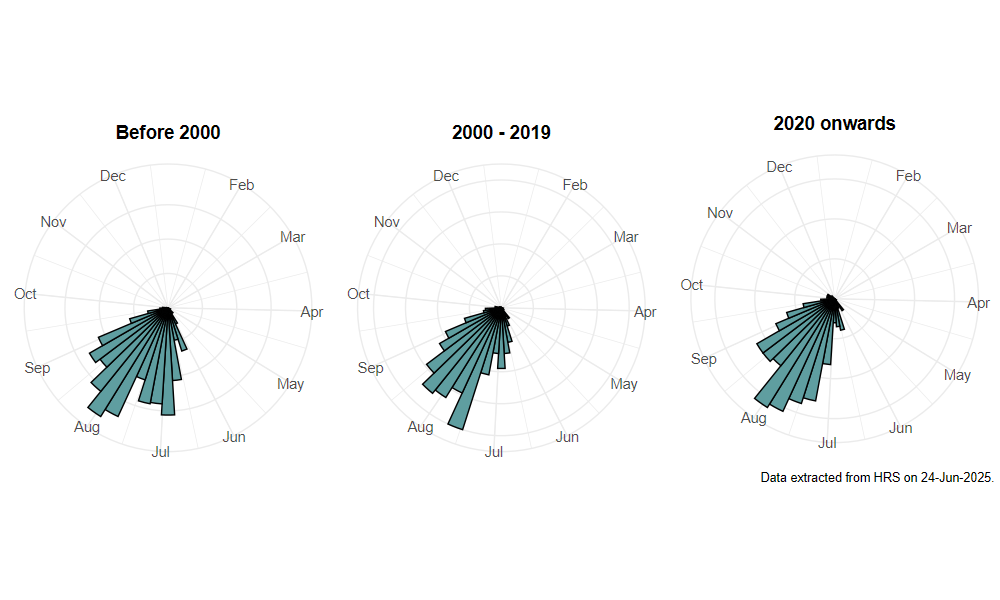Cheilosia scutellata (Fallén, 1817)
Identification
Identification difficulty = 3. ![]()
![]() according to Ball & Morris, 20241
according to Ball & Morris, 20241
Biology
The larva inhabits the fruiting bodies of large fungi, including Boletus, Polyporus, etc. The occupied fruiting body loses its shape and becomes a deliquescent mass on the ground. Adults are usually found in deciduous and coniferous woodland and may be common on the flowers of white umbels such as Hogweed Heracleum sphondylium and Wild Parsnip Pastinaca sativa. They are often to be found resting on foliage of bushes and tall herbs in dappled sunlight along glades and track-sides.
Flight period
The following plots show the number of unique records per week excluding those reported to be of immature stages.

Distribution
Frequent in well-wooded areas in southern Britain but scarce north of the Humber, with a few widely scattered records extending as far as the Inverness area.

Trends
The following plots show the Frescalo TFactor vs year and a map of the rescaled frequency (all records) for the species.
-
Ball, S., & Morris, R. (2024). Hoverflies of Britain and Ireland. WILDGuides (3rd ed.). Oxford: Princeton University Press. ↩